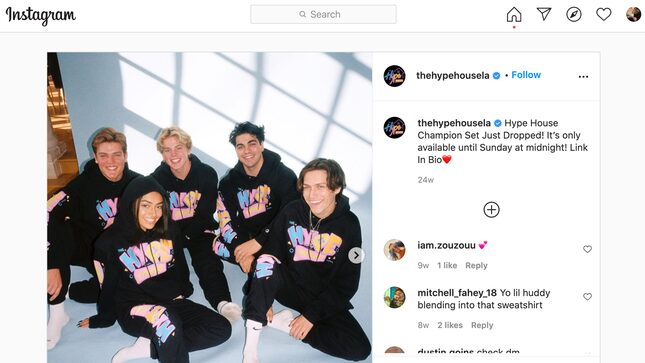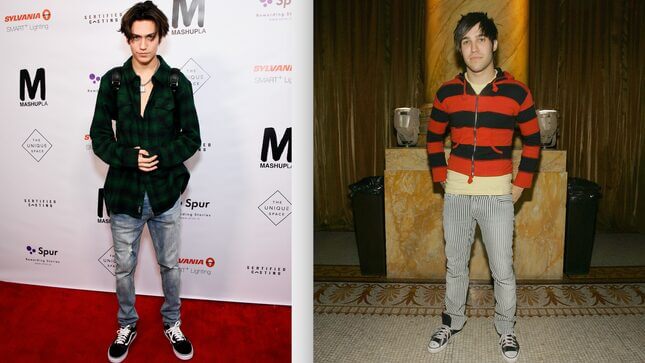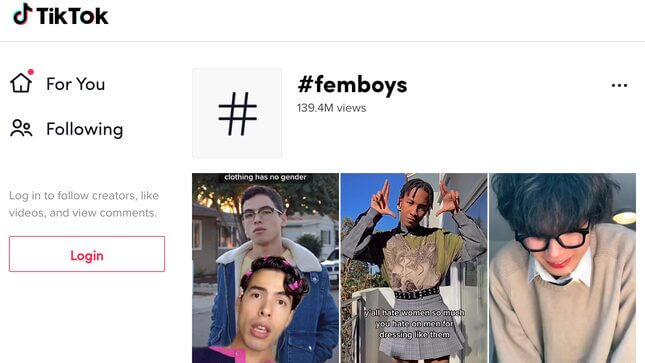

“I’m taking a stand against toxic masculinity,” Tik Tok celebrity and Charli D’Amelio’s ex-beau, Chase Hudson, wrote on Instagram earlier this spring. “I want people to wear whatever tf it is they want to wear.” Lil Huddy, as Hudson is known, was responding to a comment on a photo of him dancing around in a crop top from his own merch line, which read, “What’s up with all the guys wearing crop tops?” Lil Huddy routinely defends his fashion choices as if they were political gestures. “black nails are the move idc what anyone thinks they are so badass dont @ me,” he tweeted in February. These decisions come in loops; for each critique of his subtle fashion plays there are fans that celebrate Hudson for what are deemed courageous stylistic choices.
In 2019, when journalists realized they needed to pay attention to Tik Tok, a slew of think pieces emerged, questioning if e-boys and softboys and other various subcultures on the platform signaled a new, open-minded generation of woke young men. The boys of the TikTok teen celeb hub The Hype House painted their nails, they dyed their hair (cut into a Boy Meets World-meets-K-pop butt cut), they got their ears pierced to wear the single dangly earring (when worn in the right ear, once a trope signifying queerness—now just an accessory). Some experimented with makeup and wore women’s jeans, as confirmed in a Tweet posted by Tik Tok celeb Jaden Hossler. Perhaps this new group, whose personal style looked more like that of BTS or an accessible interpretation of Harry Styles’ pop androgyny, was subverting the traditional image of a muscular, macho heartthrob.
Maybe there is a cause for celebration in the theater of a young, straight Tik Tok celebrity wearing clothing traditionally viewed as un-masculine. Or maybe I’m just cynical.
-

-

-

-

-

-

-

-

-

-

-

-

-

-

-

-

-

-

-

-

-

-

-

-

-

-

-

-

-

-

-

-

-

-

-

-

-

-

-

-











































